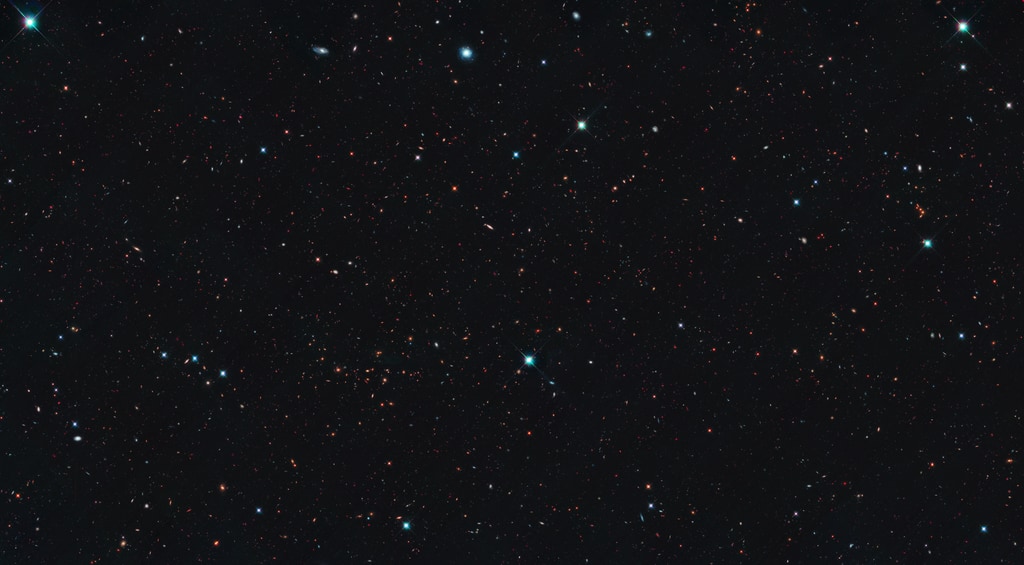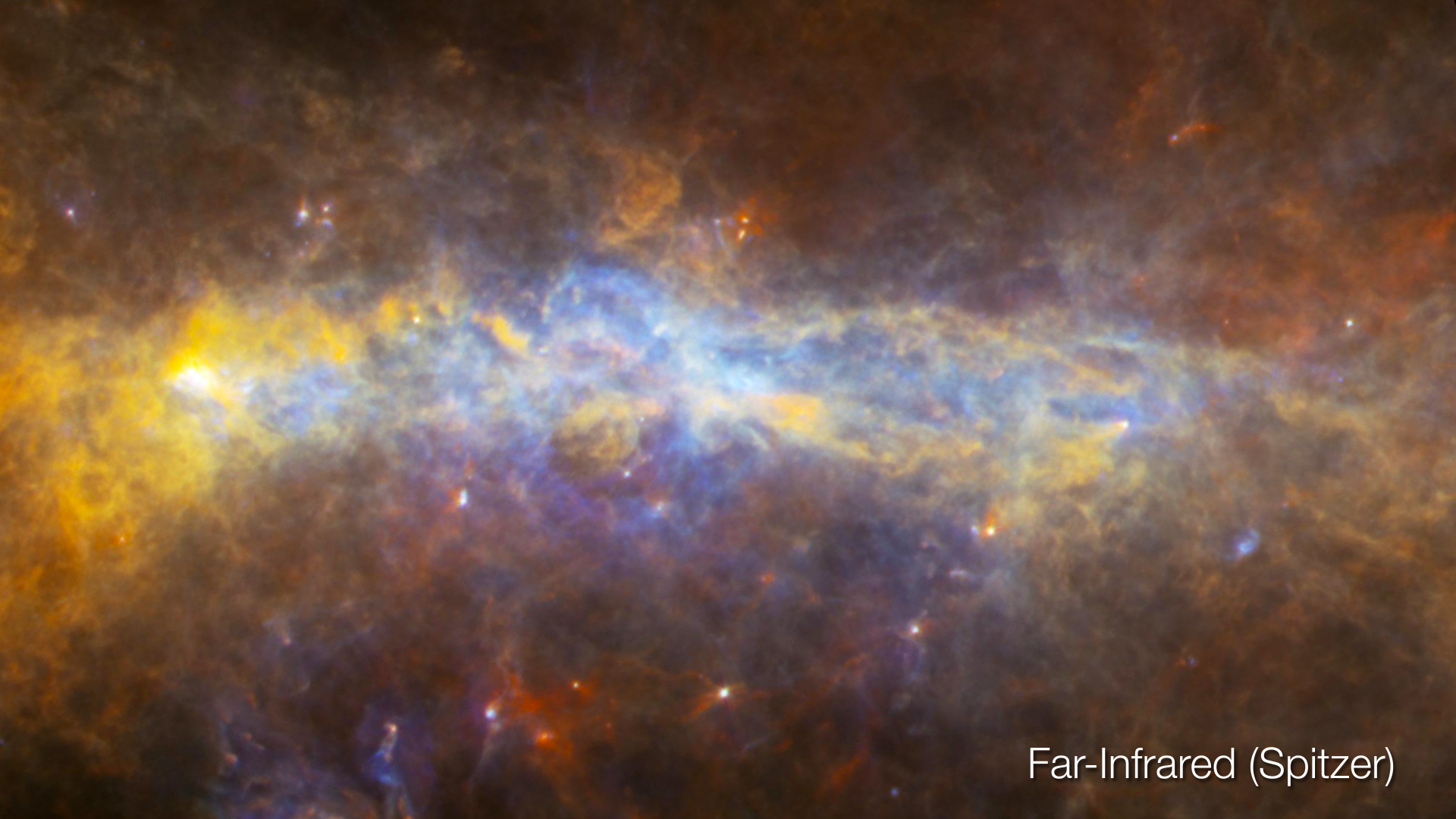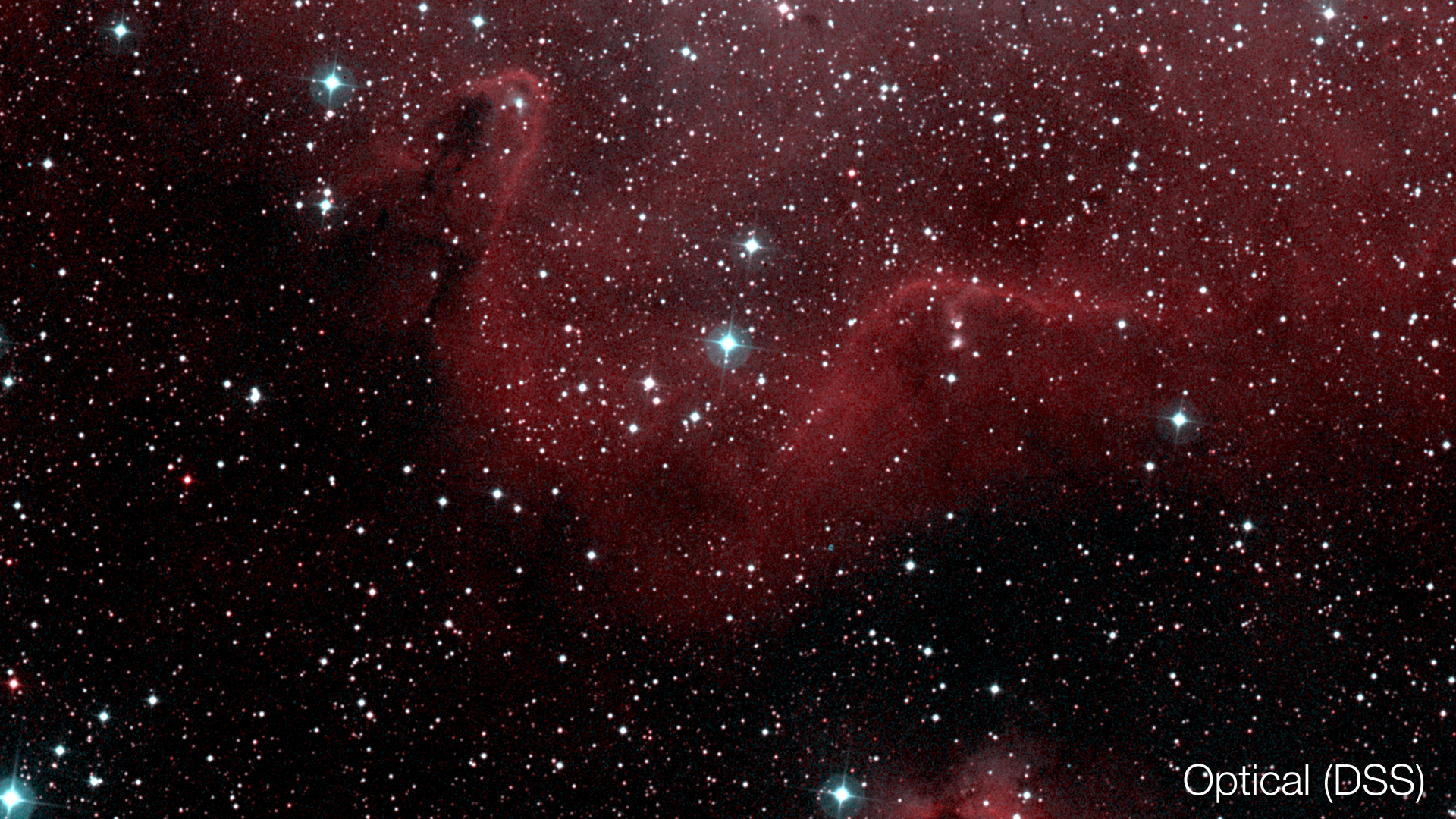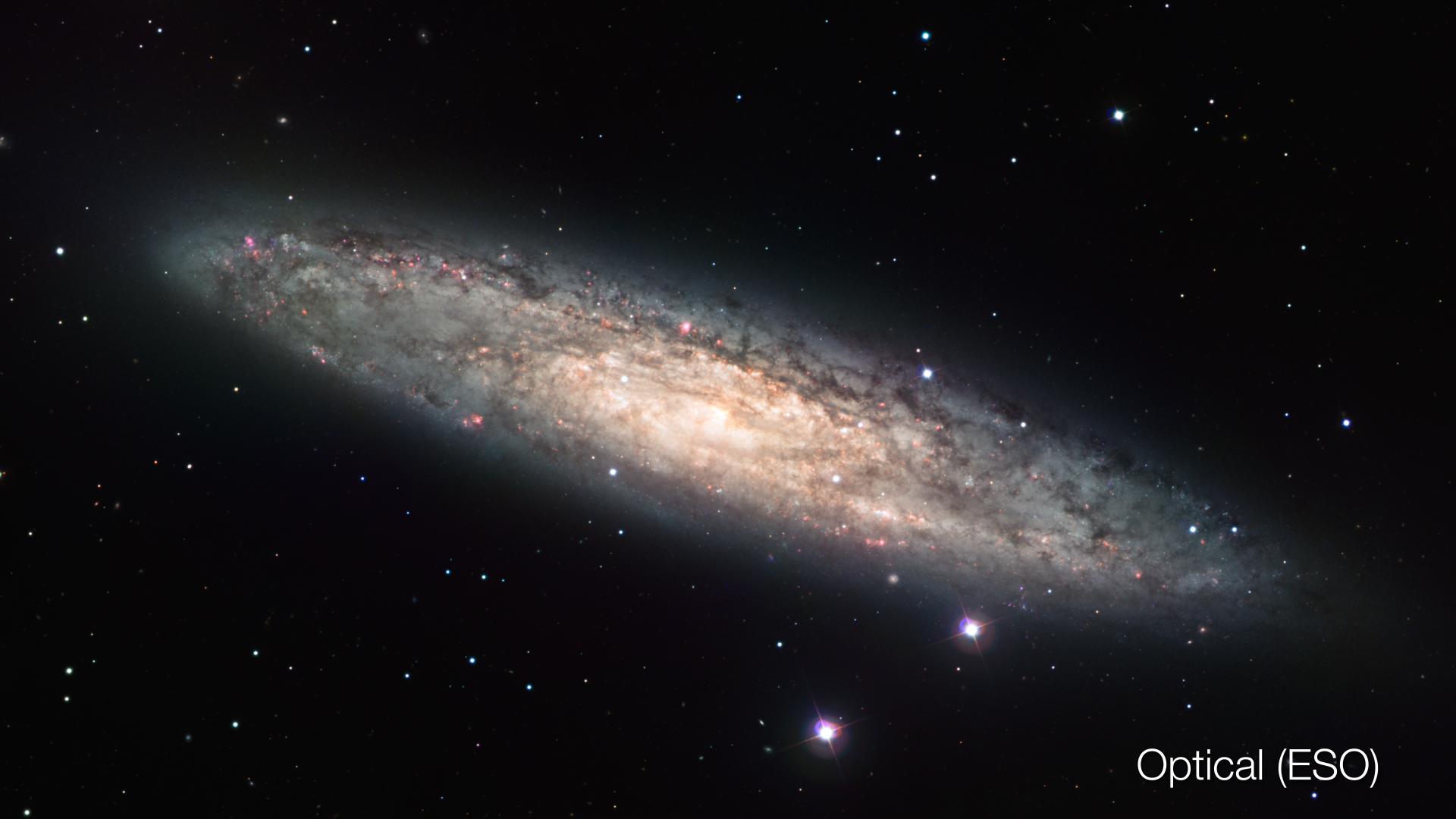Extended Groth Strip
The Extended Groth Strip covers a small swath of sky between the constellations Ursa Major and Boötes, and yet it contains at least 50,000 galaxies visible to NASA’s Hubble Space Telescope, and likely more that are beyond the range of light that Hubble can detect.
This panoramic image of sky near the Big Dipper contains at least 50,000 galaxies and took NASA’s Hubble Space Telescope nearly a year and 500 separate exposures to create, and yet it is only a very narrow area (70 arcminutes by 10 arcminutes). It is small sample typical of many, many such sections of sky, in all directions, which puts the vastness of space into dizzying perspective.
For this project astronomers looked deeply rather than broadly, seeing back in time to the universe’s youth. Hubble provides amazing detail on a wide diversity of galaxies; some are beautiful spirals or massive elliptical galaxies like those seen in the nearby universe, but others look like random assemblages of material, the leftovers from violent mergers of young galaxies. These resemble some of the most distant, youngest galaxies observed.
Despite Hubble’s powerful resolution and sensitivity, there are still galaxies so far away that they are beyond its view. Future observatories like NASA’s James Webb Space Telescope will follow up and look back to the universe’s infancy with instruments that can detect more infrared light.
Credits
Please give credit for this item to:
NASA, ESA, and M. Davis (University of California, Berkeley)
-
Visualizer
- Greg Bacon (STScI)
-
Image processing
- Marc Davis (University of California, Berkeley)
-
Technical support
- Leann Johnson (Global Science and Technology, Inc.)
Release date
This page was originally published on Monday, May 20, 2019.
This page was last updated on Monday, March 10, 2025 at 12:26 AM EDT.
Missions
This page is related to the following missions:Datasets used
-
AEGIS (All-Wavelength Extended Groth Strip International Survey)
ID: 1045Four orbiting telescopes, including Hubble, and four ground-based observatories sampled galaxies in a long, thin strip of sky to harvest clues about galaxy formation. Hubble's Advanced Camera for Surveys (ACS) snapped several hundred images of the survey field, which astronomers wove together into a rich tapestry that showcases about 50,000 galaxies. The Hubble views yielded new information about how the appearance and structure of galaxies change at different distances out in the universe.
See all pages that use this dataset -
Filters F606W (V); F814W (I) [Hubble: ACS and WFPC2]
ID: 1046
Note: While we identify the data sets used on this page, we do not store any further details, nor the data sets themselves on our site.




























